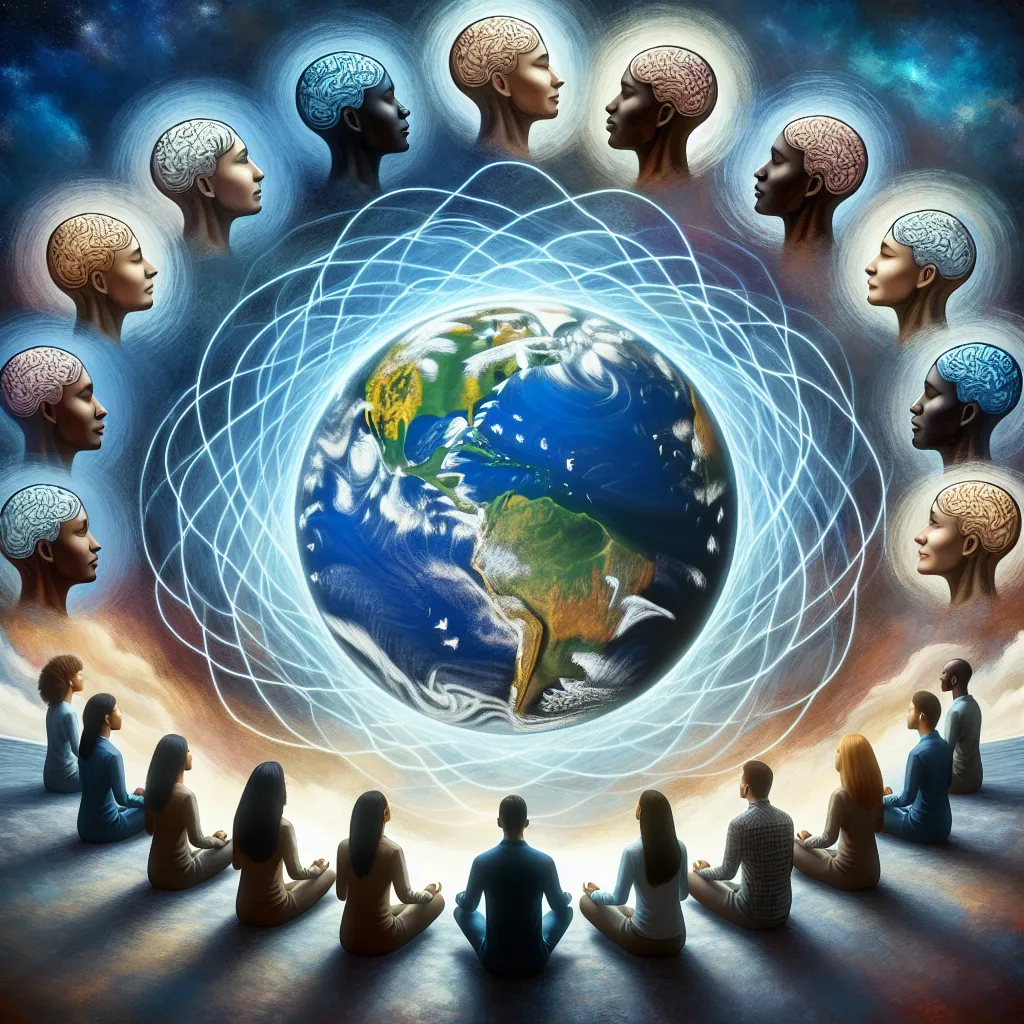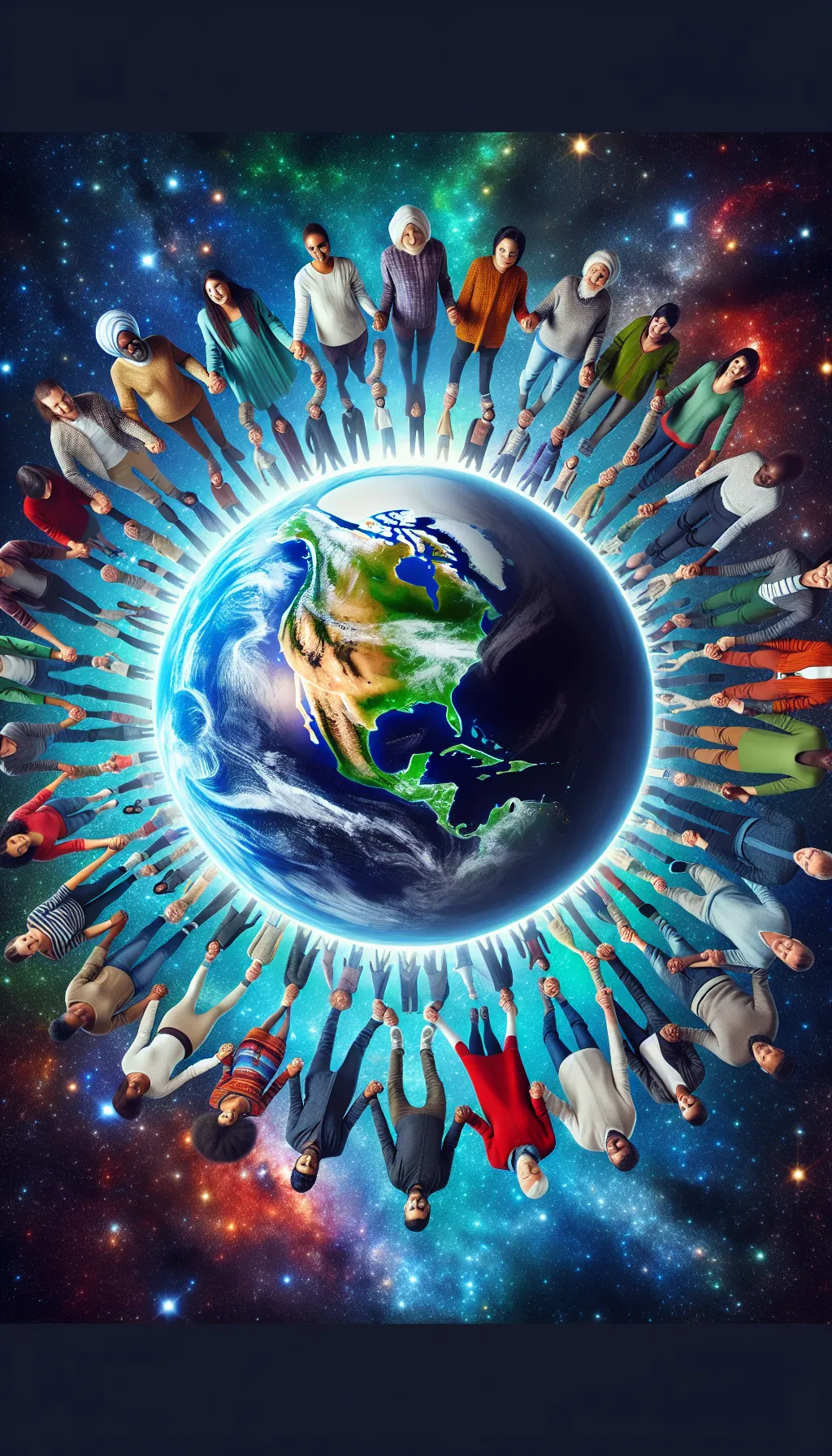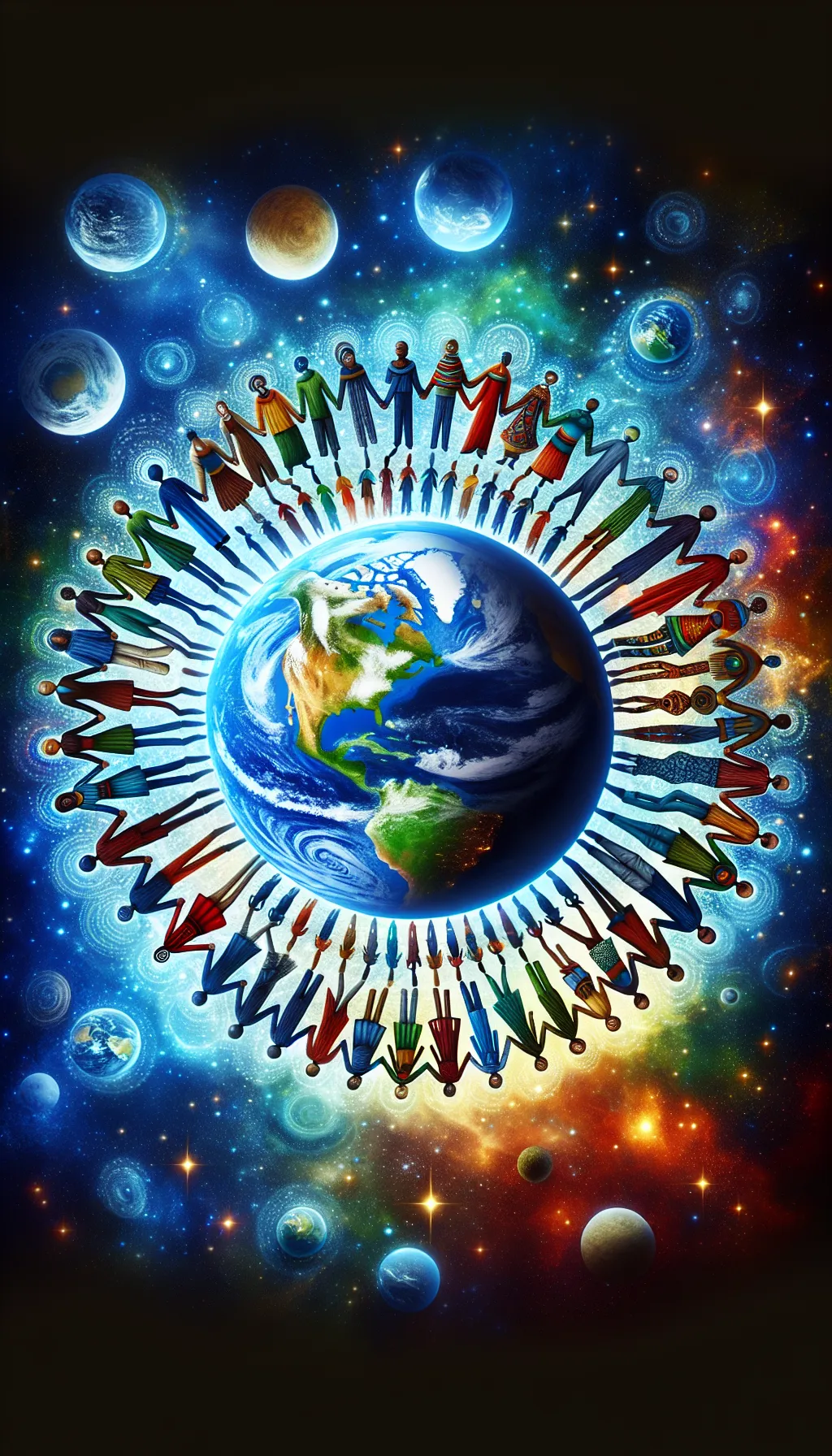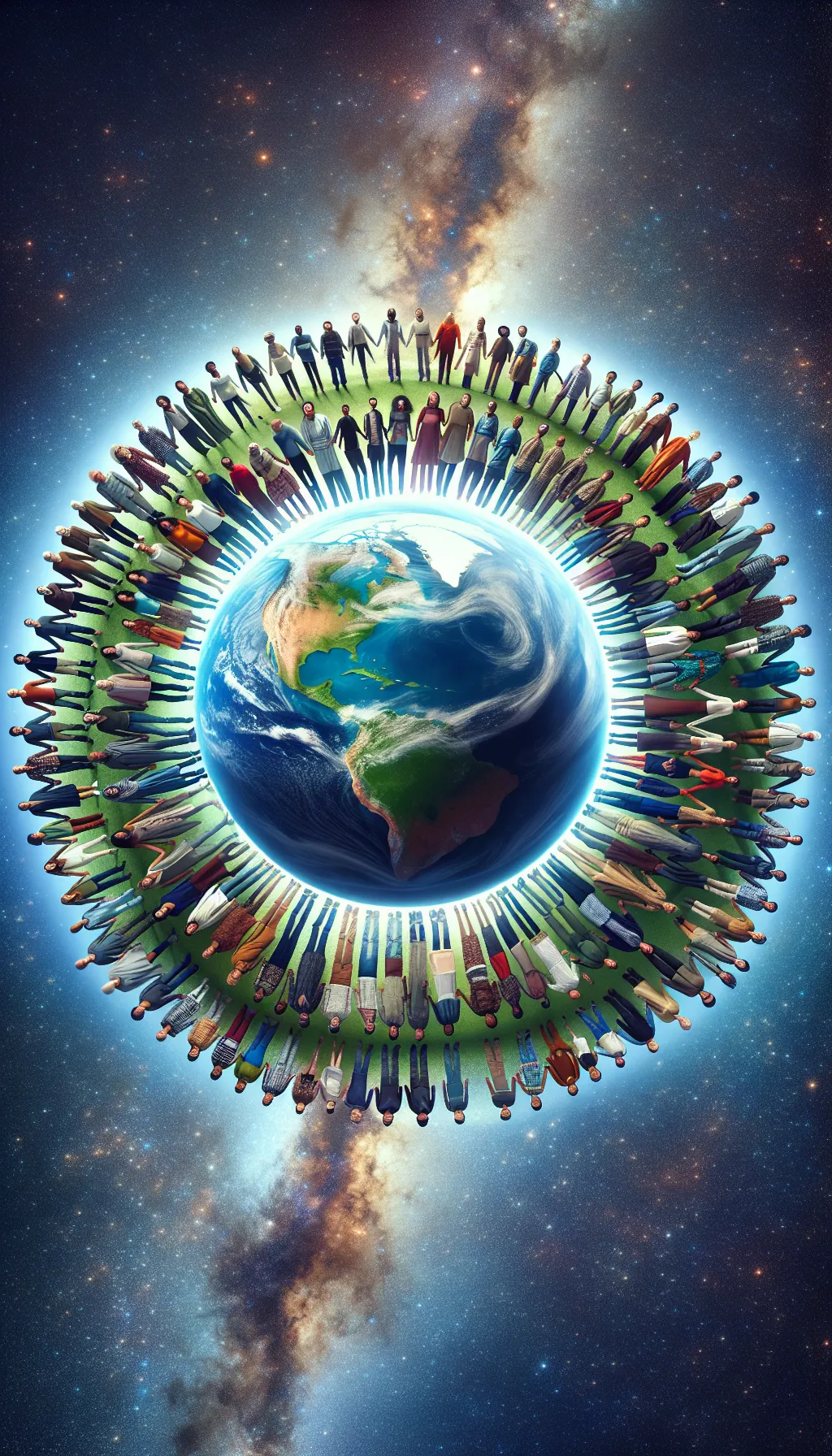Intellectual Synergy
"Humans are intellectual beings. Everyone is embedded with unique gifts. Pulling these gifts together in harmony will create greater and more wonderful outcomes than if we work independently alone."
Intellectual synergy is a collaborative process that can lead to better results than what each person could achieve on their own. It involves sharing expertise and experience to find new solutions to problems, and can result in an idea or result that is better than what either person started with. Synergy is different from compromise, which is when one plus one equals two at best. When synergizing, people may experience a change of heart, new energy, or see things in a new way. With intellectual synergy, one "times" one can equal 3, or 5, or 5,000, or even 500,000. With intellectual synergy, there is no limit to what we can do!




Intellectual synergy is a groundbreaking approach to collaboration. In a world where individual achievement is often regarded as the pinnacle of success, it may seem counterintuitive to champion the cause of multiple minds working together. This manner it tempts to conjure up images of compromise where one party must inevitably sacrifice their ideas for the greater good; however, intellectual synergy paints a different picture. This modus operandi terms the combination of several minds as a magnificent, catalytically creative process, not just a simple amalgamation of ideas, where the whole is greater than the sum of its parts.
At the heart of intellectual synergy is the belief that when individuals share their expertise, experience, and creativity, the outcome achieves a dramatic flare only possible through this shared process. It is not just about utilizing the raw knowledge and skills of others but introducing multiple perspectives to see problems in a new light that alone one might miss. Moreover, this form of collaboration is about openness, a genuine willingness to understand the views of others and seek solutions in a harmonious and integrated manner.
Intellectual synergy differs from compromise fundamentally because synergy, unlike compromise, can enhance and enrich an idea rather than diminish it. When people compromise, they often have to forsake a part of their initial plan or thought, creating a solution that might not completely satisfy any party involved. However, in a setup that practices intellectual synergy, one plus one equals three, sometimes even more. The result achieved is better, innovational, and often surpasses the expectations of the collaborating parties.
History testifies to the power of intellectual synergy with laudable examples. Watson and Crick's discovery of DNA's double helix structure in 1953 was a quintessential demonstration of intellectual synergy. Their collaborative approach, integrating ideas, and findings resulted in a scientific discovery that revolutionized our understanding of life on a molecular level. Then there's the famous duo Steve Jobs and Steve Wozniak, the founders of Apple Inc. Though Jobs lacked technical expertise, with Wozniak's technical prowess and Jobs' marketing brilliance, they reshaped the world's approach to personal computing and spawned a technological revolution.
The power of intellectual synergy lies within the very act of sharing. When individuals share their thinking, they open up possibilities for thought waves to clash, merge, and form unforeseen and extraordinary ideas. This sharing of thoughts creates an environment where one is inspired by the other's knowledge and outlook, igniting further creativity. It is indeed magical when the shared knowledge sparks new thoughts, bringing innovative solutions to the most complex problems.
That is the beauty of intellectual synergy. It could lead to serendipitous discoveries and enlightened solutions that were hitherto unseen, veiled by the limits of a single perspective. It is like a symphony, each instrument different, unique in its sound, but together they create a harmony that is pleasing to the ear and the heart. The instruments here are the thought waves of individuals, each unique but when combined, creating a resonating harmony of ideas.
But for intellectual synergy to be successful, it requires openness, mutual respect, and a willingness to listen and collaborate. When we allow ourselves to learn from others' experiences and knowledge, our perspective enriches and widens. Such a learning attitude is not only beneficial for the individual but also for the community and society, reflecting on the power of collective intelligence.
In conclusion, Intellectual synergy is an invaluable asset that can lead to breakthroughs that can potentially change the world. It validates the saying 'two heads are better than one,' but it is essential to remember that synergy is not merely about adding brains together. It is about openness, effective communication, mutual respect, a learning attitude, and an environment conducive to the free flow of thoughts. By fostering intellectual synergy, we can embrace the power that comes with shared thinking and potentially unlock the doors to unprecedented innovations and solutions.
50 examples of intellectual synergy
In the modern era of rapid innovation and technological advancement, the importance of intellectual synergy cannot be underestimated. It's often said, "Two heads are better than one," and history has shown us countless examples where collaborative thinking has resulted in more substantial achievements than individual efforts. In this article, we will explore 50 cases where intellectual synergy produced a superior result, highlighting duos like Steve Jobs and Steve Wozniack or Watson and Crick.
1. **Steve Jobs and Steve Wozniack**: This dynamic duo co-founded Apple Inc. Wozniak, the technical wizard, built the first Apple computer, while Jobs, the consummate marketer, made it sell. Their synergy led to many groundbreaking products, including Macintosh, iPhone, iPod, and iPad.
2. **Francis Crick and James Watson**: Collaborating at the University of Cambridge, these two scientists discovered the double-helix structure of DNA. Their combined intellectual prowess led to a milestone in genetic research.
3. **Bill Gates and Paul Allen**: Another pair of tech giants who co-founded Microsoft. Gates provided the business acumen, while Allen served as the tech genius. Their collaboration led to the development of Windows and revolutionized personal computing.
4. **Larry Page and Sergey Brin**: Co-founders of Google, Page and Brin changed the world of internet search and advertising. Their collective efforts have also resulted in cutting-edge technologies like Android and Google Maps.
5. **Marie and Pierre Curie**: This scientist couple discovered radium and polonium, and their research in radioactivity led to the development of X-ray machines. They are the only couple to win a Nobel Prize in Physics.
6. **Walt Disney and Ub Iwerks**: Iwerks helped transform Disney's creative vision into reality, contributing to the creation of iconic characters like Mickey Mouse and Oswald the Lucky Rabbit.
7. **John Lennon and Paul McCartney**: This talented duo formed half of the legendary Beatles, changing the course of music history with their innovative song writing and melodious harmonies.
8. **Ben Cohen and Jerry Greenfield**: The co-founders of the popular Ben & Jerry's ice cream brand. Their shared passion for making the best possible ice cream led to an internationally-renowned business.
9. **William Procter and James Gamble**: Their combined prowess led to the formation of global consumer goods giant Procter & Gamble, which manages famous brands such as Gillette, Tide, and Pampers.
10. **Orville and Wilbur Wright**: Known as the Wright Brothers, this sibling pair made significant strides in aviation history. They designed the first successful airplane, thanks to their shared passion for flight.
11. **Henry Ford and Thomas Edison**: Though their primary collaborations were in electricity and automobile industries, their friendship is a notable example of synergic interactions.
12. **Evan Spiegel and Bobby Murphy**: Co-founders of the multimedia messaging app, Snapchat. Their shared vision of a unique social platform made Snapchat a massive success.
13. **John Warnock and Charles Geschke**: Founders of Adobe Systems, their ingenious collaboration culminated in creating pivotal software such as Adobe Photoshop, Adobe Illustrator, and Adobe Acrobat.
14. **Bob Woodward and Carl Bernstein**: This journalistic duo famously took down the Nixon administration with their synergic investigative reporting during the Watergate scandal.
15. **Isaac Newton and Gottfried Leibniz**: Both mathematicians are attributed as the inventors of calculus. Their independent work occurred at similar times, but their collective legacy greatly impacts mathematics today.
16. **Andrew Grove, Robert Noyce, and Gordon Moore**: This trio founded Intel, and their combined vision transformed the semiconductor industry, paving the way for modern computing.
17. **Martin Cooper and John F. Mitchell**: Together at Motorola, they invented the first handheld mobile phone, revolutionizing communication.
18. **Jerome Lemelson and Dartmouth College Tuck School students**: Lemelson partnered with students to invent the SuperSoaker and Teddy Ruxpin, among other best-selling toys.
19. **Giorgio Armani and Sergio Galeotti**: Galeotti's business acumen paired with Armani's design talent led to the creation of the noteworthy luxe brand, Armani.
20. **Jerome Robbins and Leonard Bernstein**: Collaborating in ballet and musical theater productions, most notably "West Side Story," this pair represents intellectual synergy in performing arts.
21. **Nolan Bushnell and Allan Alcorn**: Their collaboration led to the launch of the famous video game, Pong, birthing the hugely successful enterprise Atari.
22. **Warren Buffett and Charlie Munger**: Their combined intellectual prowess has turned Berkshire Hathaway into a multi-billion dollar conglomerate.
23. **Elizabeth Blackburn, Carol W. Greider and Jack W. Szostak:** Sharing the Nobel Prize in Physiology or Medicine in 2009, these scientists' collaboration led to the discovery of how chromosomes are protected by telomeres and the enzyme telomerase.
24. **Amadeus Mozart and Joseph Haydn:** Both were famous composers of the classical era. Their friendship and mutual respect led to a significant amount of intellectual synergy, influencing each other's work.
25. **Domenico Dolce and Stefano Gabbana**: Jointly, they founded the luxury fashion house Dolce & Gabbana, repeatedly reshaping fashion trends with their combined creative vision.
26. **Jack Kilby and Robert Noyce**: Independent inventors of the integrated circuit, their work revolutionized modern technology and paved the way for the digital age.
27. **Jerry Yang and David Filo**: In the pursuit of creating a directory of websites, they founded Yahoo!. This was one of the precursors to modern search engines.
28. **David Packard and William Hewlett**: Hewlett-Packard (HP), a renowned multinational IT company, was born from their shared vision of technical inventions right from a garage.
29. **Pierre Omidyar and Jeffrey Skoll**: Their synergy led to eBay, a multinational e-commerce business and one of the notable success stories of the dot-com bubble.
30. **Tiger Woods and Hank Haney**: Woods' exceptional golfing skill paired with Haney's strategic mindset helped build an iconic golf career.
31. **Jack Dorsey, Biz Stone, and Evan Williams**: Twitter, known worldwide, resulted from their collective efforts, changing the face of social media forever.
32. **Mark Zuckerberg, Eduardo Saverin, Andrew McCollum, Dustin Moskovitz, and Chris Hughes**: The founding team of Facebook, their collaboration has significantly impacted how we interact and share information online.
33. **Reed Hastings and Marc Randolph**: Responsible for the birth and success of Netflix, their vision has revolutionized the way we consume television and film.
34. **Eli Whitney and Catherine Greene**: Known for the development of the cotton gin, their collaboration accelerated the industrial revolution in the US.
35. **Apu Gupta and Nick Shiftan:** These co-seasoned entrepreneurs founded Curalate, creating visual commerce solutions for brands.
36. **Charles Rolls and Frederick Royce**: The luxury car and aero engine manufacturing company Rolls-Royce was established from the synergy of these visionaries.
37. **Richard and Maurice McDonald**: The fast-food chain McDonald's that revolutionized the food industry was born from their shared ideas and values.
38. **Jim Goodnight and John Sall**: Co-founders of SAS Institute, one of the largest privately-held software businesses; their collaborative work in advanced analytics and business intelligence is remarkable.
39. **Masaru Ibuka and Akio Morita**: Their shared vision of innovative products led to the establishment of Sony, a leader in electronics.
40. **Larry Ellison, Robert Miner, and Ed Oates**: Founding Oracle, their collective foresight left a significant imprint on the enterprise software industry.
41. **Virgil Abloh and Kanye West**: A strong collaboration in the fashion and music industry, their shared creative vision created a unique cultural dialogue.
42. **Daniel Ek and Martin Lorentzon**: Spotify, revolutionizing the music-streaming industry, was their joint brainchild.
43. **Jan Koum and Brian Acton**: This duo founded WhatsApp, permanently changing the landscape of instant messaging.
44. **Sergey Bubka and Vitali Petrov**: Legendary pole vaulter Bubka and his coach Petrov combined efforts to revolutionize the pole vaulting technique.
45. **Ray Tomlinson and ARPANET Team**: Tomlinson, along with his team at ARPANET, invented email, reshaping the way we communicate.
46. **Adi Dassler and Rudolph Dassler**: Originally working together to start Adidas, they later created PUMA when they separated. Their collective innovations have had a lasting impact on sportswear.
47. **Richard Feynman, Julian Schwinger, Sin-Itiro Tomonaga**: This trio shared the Nobel Prize in Physics in 1965 for their work in quantum electrodynamics, reinforcing that a problem can often have multiple viable solutions.
48. **Chad Hurley, Steve Chen, and Jawed Karim**: Founders of YouTube, their combined efforts have reshaped how we share and consume video content.
49. **Travis Kalanick and Garrett Camp**: Co-founders of Uber, their collaborative ambition has reformulated the traditional taxi industry and created the framework for modern gig economy.
50. **Bob Kahn and Vint Cerf**: Known as the "Fathers of the Internet" for their co-design of the Transmission Control Protocol (TCP) and the Internet Protocol (IP).
These examples not only depict the potential for boundary-pushing innovations when bright minds collaborate but also demonstrate how different strengths and skillsets can complement each other, resulting in a product, service, or achievement that can reshape entire industries and facets of our daily lives.
However, 50 examples can't even begin to encapsulate the immense potential that resides in thoughtful intellectual synergy and teamwork. From lesser-known innovators working tirelessly out of their garages to global tech giants developing the latest game-changing technology, collaboration continues to be the engine driving progress, innovation, and unforeseen achievements.
What makes intellectual synergy so transformative is the idea of shared knowledge and expertise: no one person holds all the answers, but together, we can come pretty close.
This article pays homage to those who understand and appreciate intellectual synergy and collaboration's power and emphasizes the priceless value of teamwork and shared vision in the pursuit of innovation. It is no surprise that many of the most impactful and successful organizations and innovations of our time have been the result of dynamic duos, resourceful teams, and powerful partnerships. Intellectual synergy truly makes the whole greater than the sum of its parts.
Whether it's two people or an entire team working together to solve a problem or create something new, the power of intellectual synergy remains one of the most potent tools we have for innovation and advancement. It is an essential catalyst that can propel us into the future, transforming what we thought possible and pushing boundaries beyond our wildest imaginations.